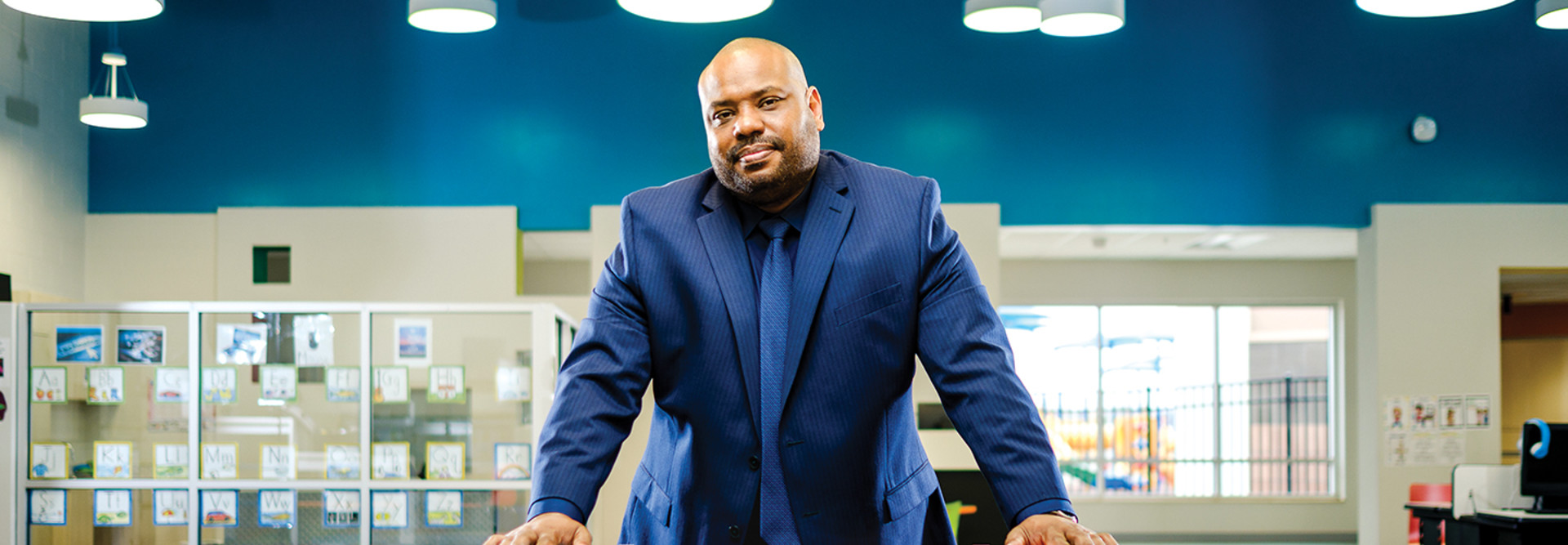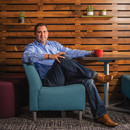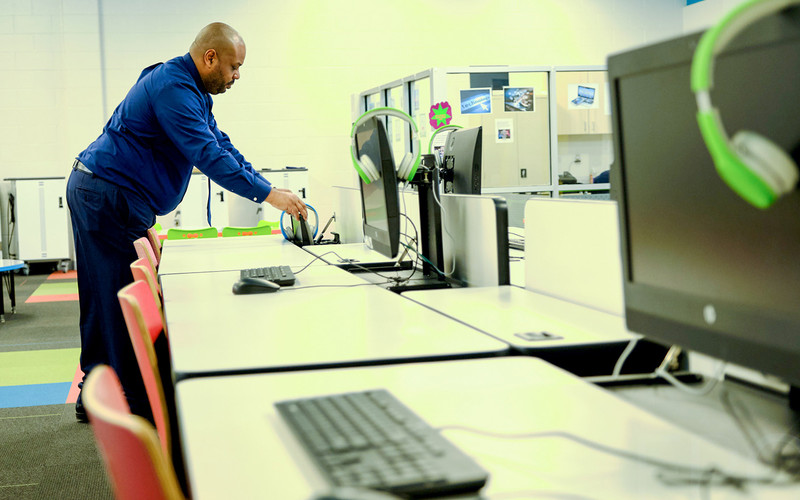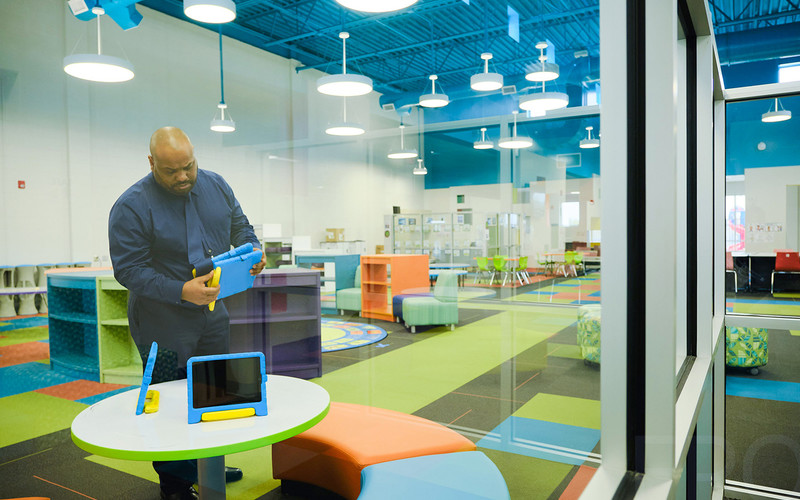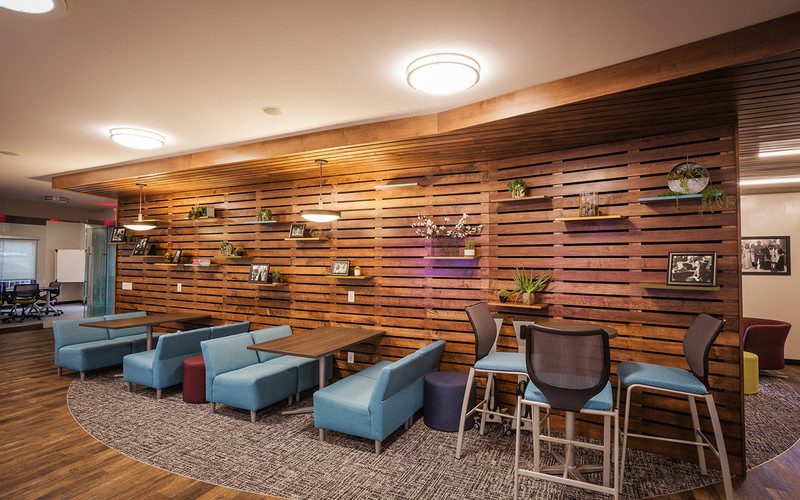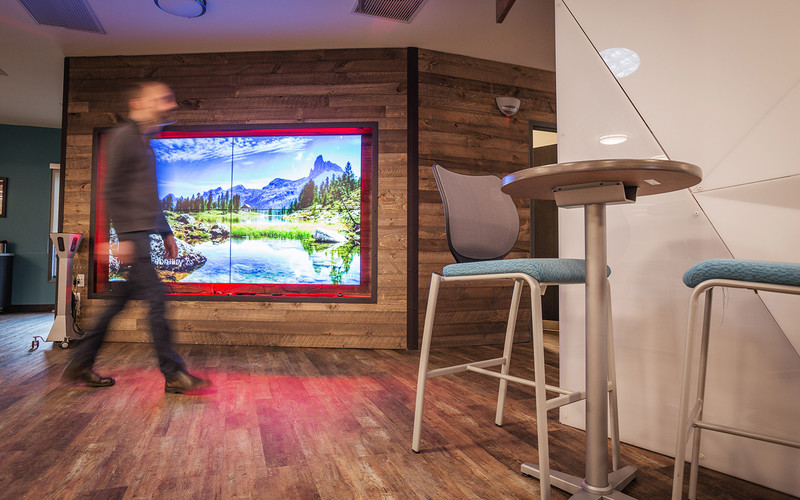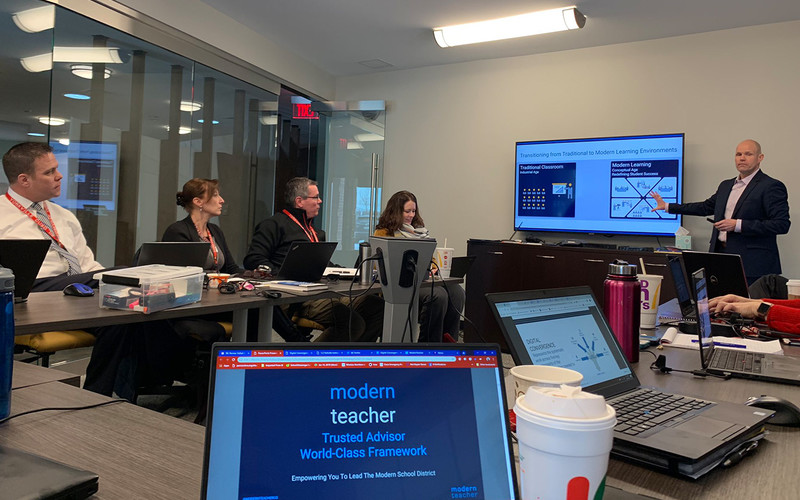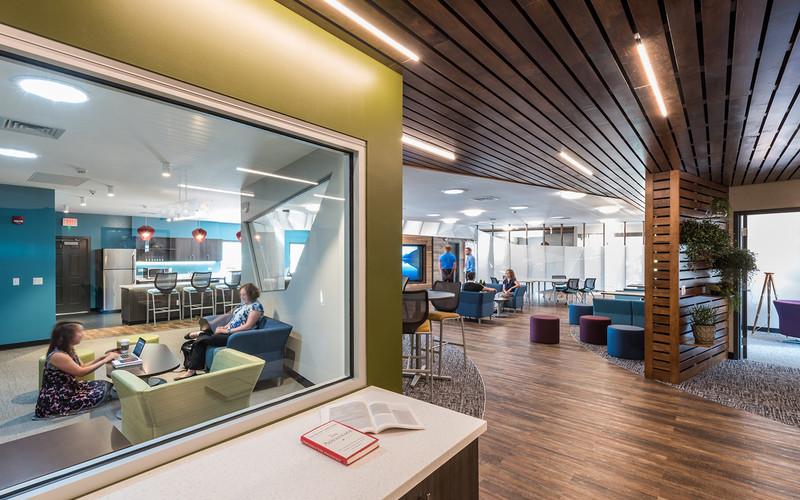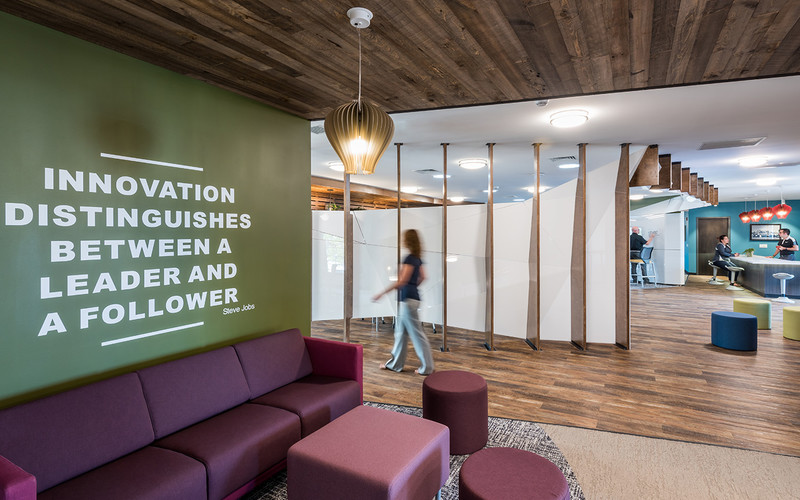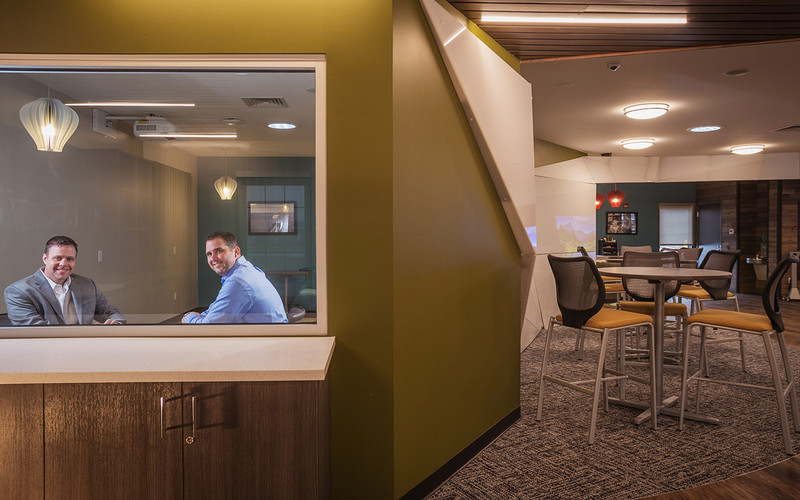And in Illinois, Yorkville Community Unit School District 115 invested in a state-of-the-art central lounge and meeting area for faculty and staff, where teachers can collaborate in small groups, hop on a videoconference with peers anywhere in the world, or just catch up on email with a cup of coffee before an after-school game begins.
While those initiatives represent vastly different takes on the modern learning environment, they each reflect a mindset shift away from the “sage on the stage” teaching model — and embrace the idea that students (and teachers) are constantly learning, both inside and outside the classroom.
MORE FROM EDTECH: Check out how to create a modern learning environment using flexible furniture.
Younger Students Benefit from Education Technology
The 4-year-old prekindergarteners at the Col. Miguel Menchaca Early Childhood Center in San Antonio don’t need to pull on a string or squeeze a plush toy to hear a cow moo or a lion roar. Instead, the children can watch as their teacher slides a card under a document camera, and the animals come to life on an interactive display through the magic of augmented reality.
The center’s interactive zone also features tablets, hideaway desks with HP ProOne 400 desktop computers and tables with writable dry-erase tops.
On any given day, the children may experiment with line-following robots, practice their letters on an interactive whiteboard or play with simple coding tools.“We’ve gotten positive feedback from pretty much everybody who has seen the interactive lab,” says Cliff Herring, technology director for Southside ISD. The district opened the $27 million center in August 2018 to house kindergarten classes, but also to get a leg up on other for-profit early childhood education competitors in the market.



